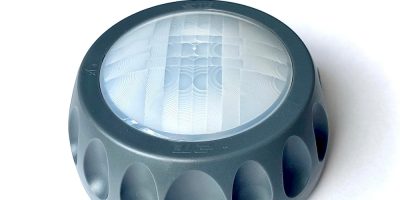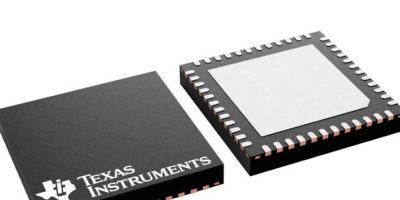TE Connectivity has launched the programmable Lumawise Motion sensor for lighting control in outdoor areas and high-bay warehouses.
With its Zhaga-D4i certification, the sensor simplifies mechanical and electrical installation in luminaires and supports the idea of a sustainable smart city. TE is a regular member of the Zhaga consortium participating in shaping the roadmap and strategy for the lighting industry. The certification makes it easier for manufacturers to develop products that can be easily integrated into lighting systems to meet the market’s increasing demands for flexibility, efficiency and interoperability.
The Lumawise motion programmable sensor detects approaching people in the largest possible detection zone to date and adjusts the brightness of dimmable luminaires accordingly. In this way, TE is helping to ensure that the smart cities of the future stay safer and more secure for pedestrians, while conserving resources and increasing sustainability of public lighting.
The Lumawise motion programmable sensor is typically utilised in outdoor settings like roadways, walk and cycle ways, car parks, railway stations, parks or recreational areas where lighting for pedestrians, wheelchair users or cyclists may be required. Its compact design supports the aesthetics of modern designed luminaires in public spaces. The sensor can also be useful for high-bay warehouse lighting, allowing for energy savings for the system operator, while still providing a higher level of safety for workers.
The sensor is available with two lens types, which respond to movement within a 30 m diameter circle or 30 m x 6 m rectangle at a height of 5 m. If it detects people approaching, it can switch the luminaire to full brightness. If there is no movement in the vicinity of the sensor, the light can be dimmed as required (to 30 % of maximum brightness). The programmable version of the motion sensor allows the user to set various parameters such as individual brightness levels or the switch-on and switch-off times depending on the ambient light.
In addition to switching from incandescent bulbs to LED lamps, economical street lighting also depends on the control system. Using a two-node architecture, the system now accommodates devices such as the Lumawise motion sensor. In particular, these sensors can be integrated into the luminaire either as standalone controllers (Zhaga Type B devices) or in conjunction with a Zhaga-D4i photocell (Zhaga Type A devices).
The Zhaga-D4i certified Lumawise sensor easily fits into the Zhaga-D4i ecosystem, which is gaining popularity as the standard for smart cities. The certification provides for the products to be compatible with each other according to this standard. This supports plug-and-play integration of sensors and control devices, as well as advanced functions for data transmission.







